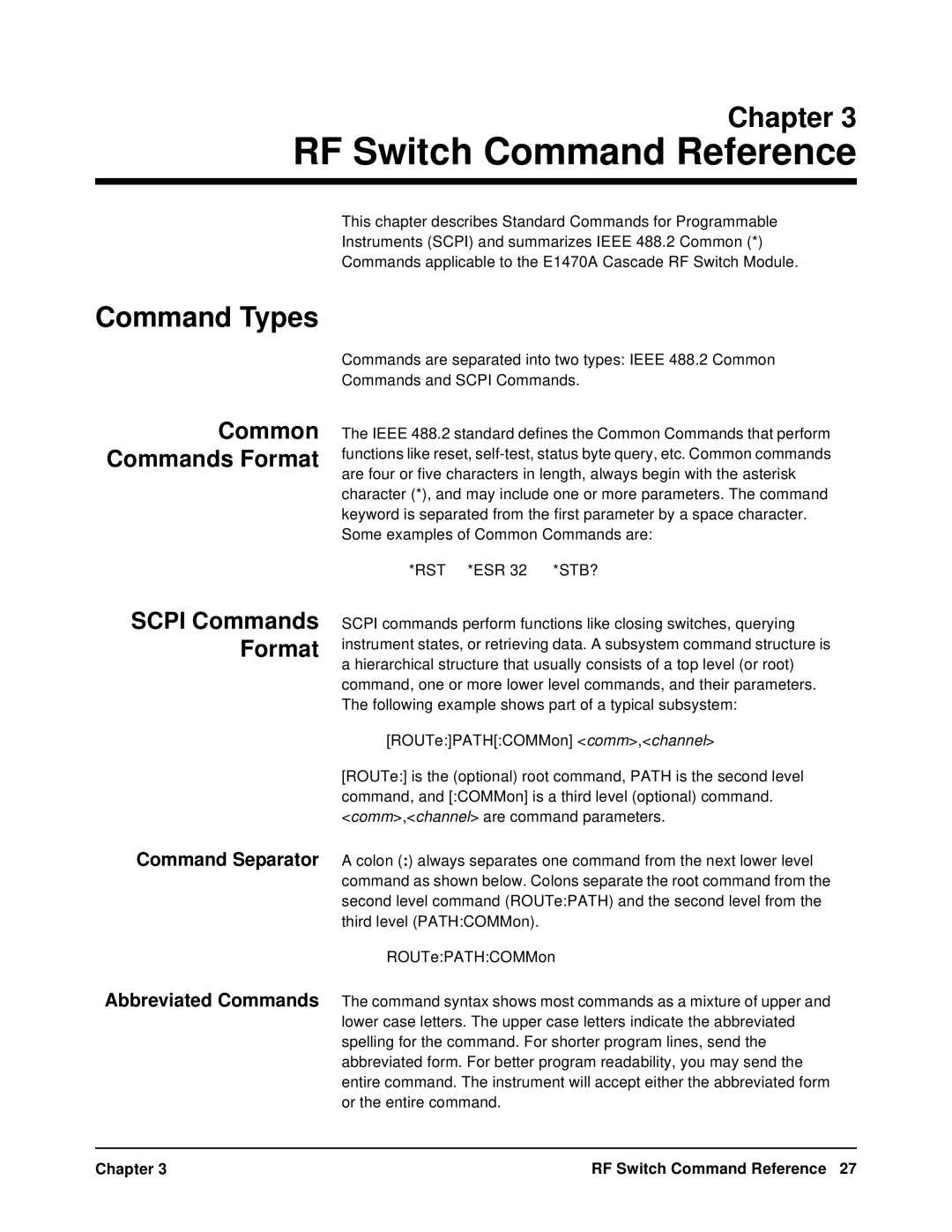
Chapter 3
RF Switch Command Reference
This chapter describes Standard Commands for Programmable
Instruments (SCPI) and summarizes IEEE 488.2 Common (*)
Commands applicable to the E1470A Cascade RF Switch Module.
Command Types
Commands are separated into two types: IEEE 488.2 Common
Commands and SCPI Commands.
Common Commands Format
The IEEE 488.2 standard defines the Common Commands that perform functions like reset,
*RST *ESR 32 *STB?
SCPI Commands Format
SCPI commands perform functions like closing switches, querying instrument states, or retrieving data. A subsystem command structure is a hierarchical structure that usually consists of a top level (or root) command, one or more lower level commands, and their parameters. The following example shows part of a typical subsystem:
[ROUTe:]PATH[:COMMon] <comm>,<channel>
Command Separator
Abbreviated Commands
[ROUTe:] is the (optional) root command, PATH is the second level command, and [:COMMon] is a third level (optional) command. <comm>,<channel> are command parameters.
A colon (:) always separates one command from the next lower level command as shown below. Colons separate the root command from the second level command (ROUTe:PATH) and the second level from the third level (PATH:COMMon).
ROUTe:PATH:COMMon
The command syntax shows most commands as a mixture of upper and lower case letters. The upper case letters indicate the abbreviated spelling for the command. For shorter program lines, send the abbreviated form. For better program readability, you may send the entire command. The instrument will accept either the abbreviated form or the entire command.
Chapter 3 | RF Switch Command Reference 27 |
